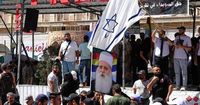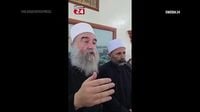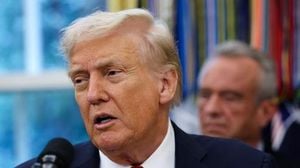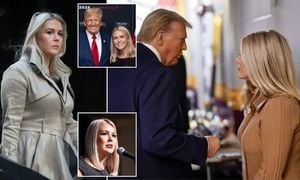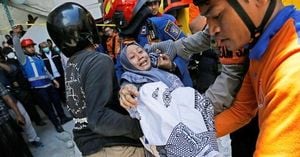In the summer of 2025, the southern Syrian city of Sweida, home to the country’s Druze minority, became the epicenter of a dramatic shift in Syria’s already fractured landscape. Syrian government forces, intent on reasserting control over the semi-autonomous enclave, entered Sweida in what many saw as a show of strength. Instead, the move backfired spectacularly, igniting deadly sectarian violence that has hardened Druze opposition to Damascus and pushed the community toward an unlikely new partner: Israel.
According to the Associated Press, the entry of government fighters into Sweida triggered intense clashes in July. Hundreds of civilians, mostly Druze, lost their lives—many at the hands of government-aligned forces. Shocking videos soon surfaced online, showing armed men executing Druze civilians kneeling in public squares and humiliating elderly men by forcibly shaving off their mustaches. These brutal acts sent shockwaves through the Druze community and marked a turning point in their relationship with the central government.
"The main idea is that we have to separate (from Damascus) to prevent another massacre," said Omar Alkontar, a 21-year-old biology student whose village was destroyed during the violence. Alkontar’s sentiment is increasingly common among Sweida’s Druze, who have long maintained a distinct identity blending elements from Islam and other philosophies. Historically, they’ve managed to stay neutral during Syria’s civil war, which erupted in 2011. But the events of 2025 have forced a reevaluation.
As reported by AP and corroborated by the Syrian Observatory for Human Rights, Sweida had previously been relatively insulated from the worst of the conflict. However, frustration over government neglect and a lack of security had been simmering. Local protests demanding better living conditions and autonomy gained momentum throughout the year. A poll by the Syrian Center for Policy Research found that roughly 68% of Sweida respondents believed that local governance would improve their lives—a striking indicator of shifting public sentiment.
In August, Druze leaders responded decisively. Sheikh Hikmat al-Hijri, a spiritual figure who had previously oscillated between supporting and opposing the government, emerged as the dominant voice. He announced the formation of the Supreme Legal Council, a de facto government-like body for the Druze. Dozens of armed factions—some former Assad loyalists, others long-time opponents—banded together under the banner of the National Guard. Critics, however, noted that the coalition included militias involved in trafficking the amphetamine Captagon, pointing to the complex and sometimes contradictory alliances at play.
Al-Hijri’s call for a separate Druze region was unequivocal. "We urge all the honorable in the world … to stand with the Druze sect in southern Syria to declare a separate region that keeps us protected until the end of time," he declared in August. The message resonated deeply, particularly after the July bloodshed. For many in Sweida, the idea of autonomy—or even outright secession—no longer seemed radical but necessary for survival.
Yet the Druze community is far from monolithic. While many now back al-Hijri’s vision, some local leaders who support interim President Ahmad al-Sharaa (a former al-Qaida-linked militant who promised a democratic transition) are now widely seen as traitors. Internal divisions persist over the best path forward: some advocate for confrontation, while others urge diplomacy and negotiation. "We need to be cautious about who we ally with," a local Druze leader cautioned, reflecting on the community’s long history of betrayals and shifting alliances.
Perhaps the most surprising development in this new chapter is the Druze community’s growing openness to Israel. Historically, Druze in Syria have kept their distance from both the Syrian and Israeli governments, even as Druze in Israel and the Golan Heights have maintained distinct ties. But the violence of July 2025 changed the calculus. When fighting erupted, Israel’s Druze spiritual leader, Sheikh Mowafak Tarif, called for Israeli military intervention to protect Syrian Druze. Israel responded with airstrikes on Syrian government positions, including the Defense Ministry headquarters in Damascus, prompting Syrian forces to withdraw from Sweida.
Tarif and al-Hijri now maintain regular contact, organizing aid deliveries to the besieged province. Tarif has also lobbied Western diplomats for a demilitarized southern Syria and a humanitarian corridor from Israel to Sweida. Al-Hijri, for his part, has publicly thanked Israel on several occasions. The impact is visible on the ground: at protests in Karama Square, portraits of both men appear side by side, and alongside the Druze five-colored flag, Israeli flags are now sometimes waved—a powerful, if bittersweet, symbol of shifting allegiances. "It’s not necessarily a love for Israel. They felt safer after the strikes, which is very sad," Alkontar reflected after a protest. "You want the army of your own government to provide you with that security, not a foreign country."
Israel’s interest in the region is not purely humanitarian. As one Middle East analyst told AP, "Israel has a vested interest in maintaining stability along its borders. A more autonomous Druze region could serve as a buffer against hostile forces." This pragmatic approach underscores the tangled web of local grievances and broader geopolitical maneuvering now shaping southern Syria.
Meanwhile, Damascus has struggled to regain the trust of the Druze. President al-Sharaa has acknowledged mistakes by all parties and formed a fact-finding mission. In September, Syria, the United States, and Jordan announced a roadmap to return displaced Druze and Bedouins, deliver aid, and promote reconciliation. Yet these gestures have been widely dismissed in Sweida. One resident, who lost family members in the July violence, accused Damascus of "covering the attacks up" and described al-Sharaa as "a murderous extremist."
The broader implications for Syria are profound. The Druze push for autonomy and openness to Israel could inspire other minorities to seek similar arrangements, further undermining the regime’s central authority. A recent United Nations report highlighted the scale of Syria’s humanitarian crisis, with over 14 million people now in need of assistance—a stark reminder of the government’s limited capacity to address local demands.
As the balance of power continues to shift, the fate of the Druze community hangs in the balance. "As long as this government in Damascus stays, people will lean towards partition or independence," Alkontar observed, echoing a sentiment that would have been unthinkable just a few years ago. For now, Sweida stands as both a symbol of resilience and a warning of the dangers that come when a government loses the trust of its people.
